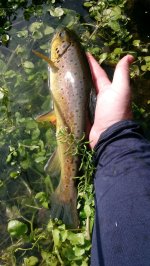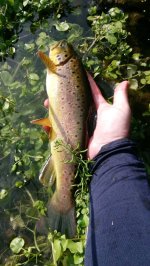C_kreek17
Member
- Joined
- Apr 25, 2020
- Messages
- 55
I’ve tried fishing it a couple times of year for the past 3-4 years. Never had much luck, but I alway start down near the conodoguinet and fish up. I have caught a small rainbow and brown but other than that haven’t had much luck. I’ll occasionally see a fish I spooked but it’s pretty rare.
I should also mention that I’m not great at fishing limestone creeks, so take what I say with a grain of salt! It definitely is a beautiful little creek hidden among the urban sprawl!
I should also mention that I’m not great at fishing limestone creeks, so take what I say with a grain of salt! It definitely is a beautiful little creek hidden among the urban sprawl!





